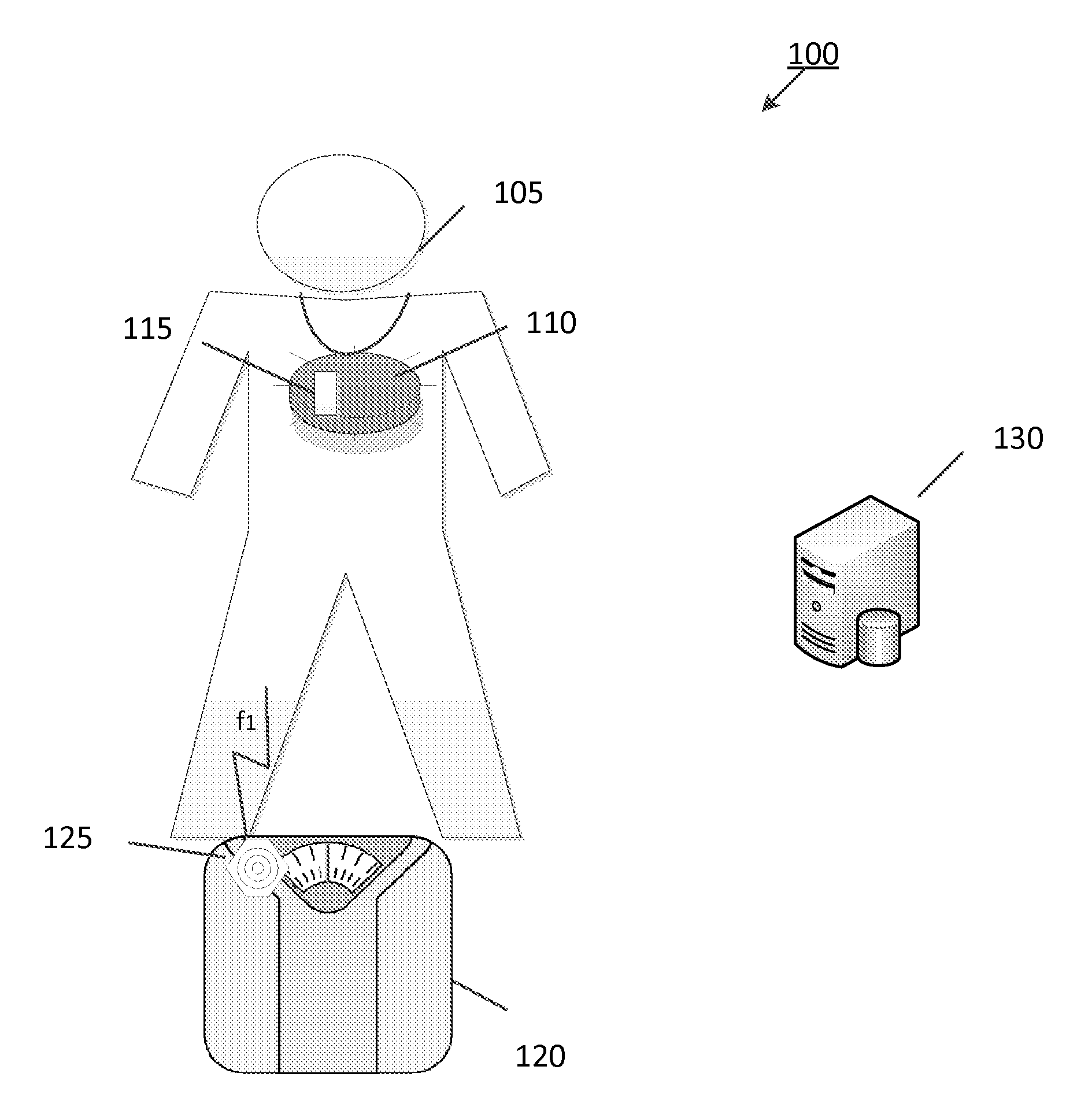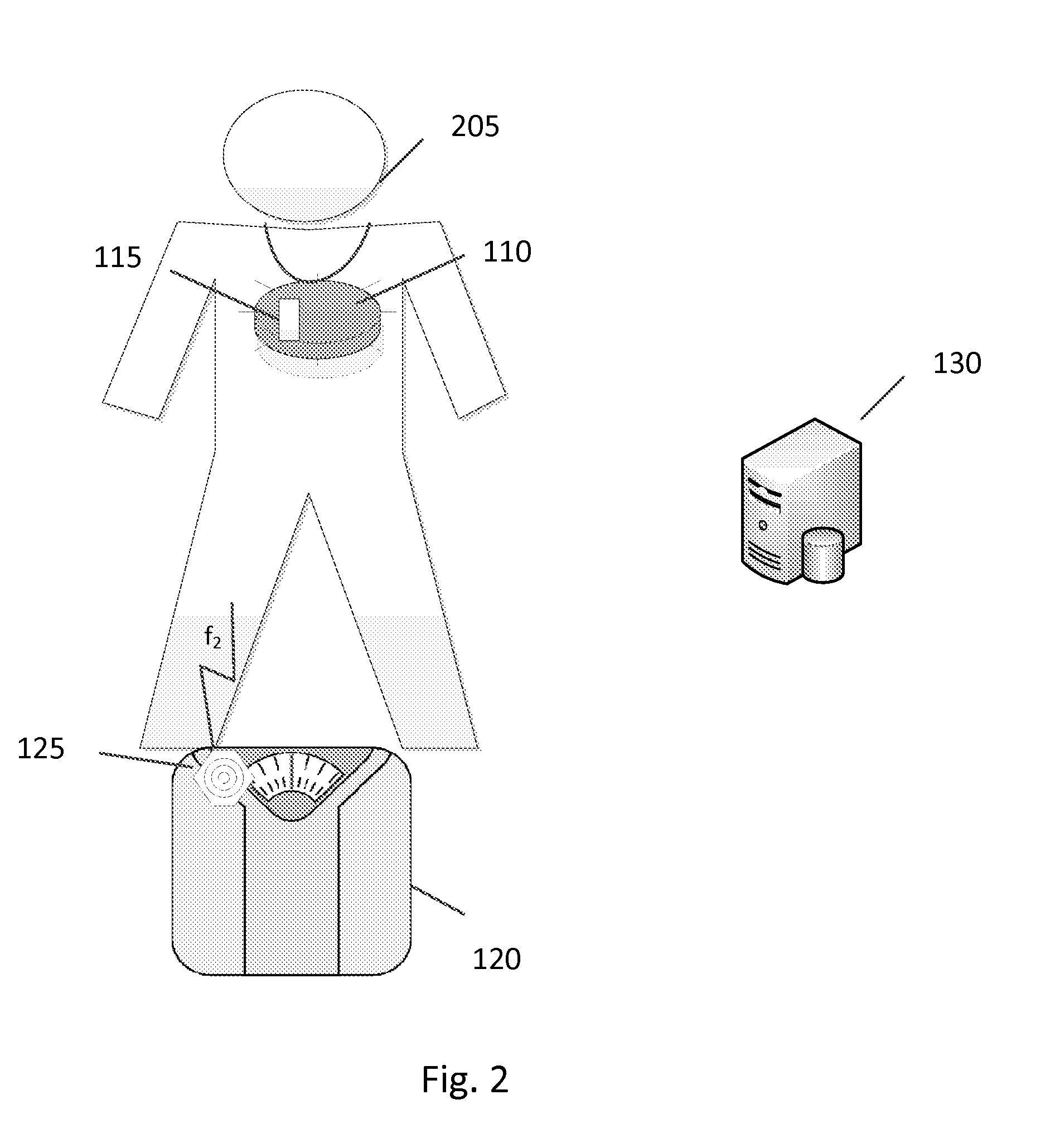Physiological data acquisition utilizing vibrational identification
a technology of vibration identification and data acquisition, applied in the field of physiological measurement techniques and biotelemetry, can solve the problems of ct scanners suffering from numerous disadvantages, ekg does not produce an image of the heart itself, and is not a direct measurement of motion,
- Summary
- Abstract
- Description
- Claims
- Application Information
AI Technical Summary
Problems solved by technology
Method used
Image
Examples
Embodiment Construction
[0021]Further features and advantages of the invention, as well as the structure and operation of various embodiments of the invention, are described in detail below with reference to the accompanying FIGS. 1-5, wherein like reference numerals refer to like elements.
[0022]U.S. patent application Ser. No. 12 / 712,488, entitled “Wireless Physiology Monitor,” the entire disclosure of which is incorporated by reference herein, describes a new non-invasive technique for physiology monitoring and assessment implemented by, for example, a wireless physiology monitoring device. Particularly, a patient is subjected to a non-harmful and relatively low power electromagnetic RF source diagnostic signal normally associated with a communications protocol such as, but not limited to a version of the IEEE 802.11(x) family of protocols in the 2.4, 3.6, or 5 GHz spectrum bands. The source diagnostic signal could be generated by the wireless physiology monitoring device itself or taken from background ...
PUM
 Login to View More
Login to View More Abstract
Description
Claims
Application Information
 Login to View More
Login to View More - R&D
- Intellectual Property
- Life Sciences
- Materials
- Tech Scout
- Unparalleled Data Quality
- Higher Quality Content
- 60% Fewer Hallucinations
Browse by: Latest US Patents, China's latest patents, Technical Efficacy Thesaurus, Application Domain, Technology Topic, Popular Technical Reports.
© 2025 PatSnap. All rights reserved.Legal|Privacy policy|Modern Slavery Act Transparency Statement|Sitemap|About US| Contact US: help@patsnap.com



